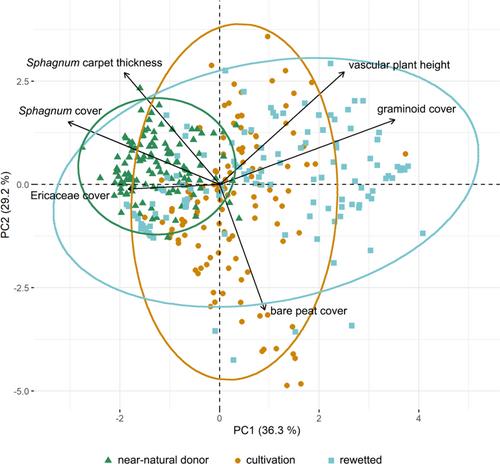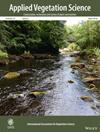Plant species composition and vegetation structure of Sphagnum cultivation sites
Abstract
Aims
The cultivation of Sphagnum mosses in paludiculture has high potential for the use of formerly drained peatlands under wet conditions. The aim of this study was to evaluate the plant species composition and vegetation structure of Sphagnum cultivation sites in comparison with near-natural donor sites and rewetted sites without Sphagnum introduction.
Location
Central Europe, northwest Germany close to the Dutch–German border.
Methods
The treatments (rewetting with and without Sphagnum introduction) and a near-natural donor as a reference were each studied at three different sites. At each site, bryophyte and vascular plant species composition as well as parameters of vegetation structure were sampled in 40 randomly positioned plots of 25 cm × 25 cm.
Results
In addition to the highly frequent Sphagnum, several further plant species typical of bogs were introduced. At two cultivation sites, the species composition showed a high degree of similarity to the near-natural donor sites, whereas the third site was more similar to the rewetted sites without the introduction of Sphagnum biomass. Rewetted sites were species-poor in comparison with all other sites. Apart from a high cover of Sphagnum, the vegetation structure at the cultivation sites differed significantly from the near-natural donor sites.
Conclusions
Sphagnum cultivation sites can be used to grow donor material for peatland restoration and contribute to species conservation by providing substitute habitat for bog-typical and threatened plant species.


 求助内容:
求助内容: 应助结果提醒方式:
应助结果提醒方式:


